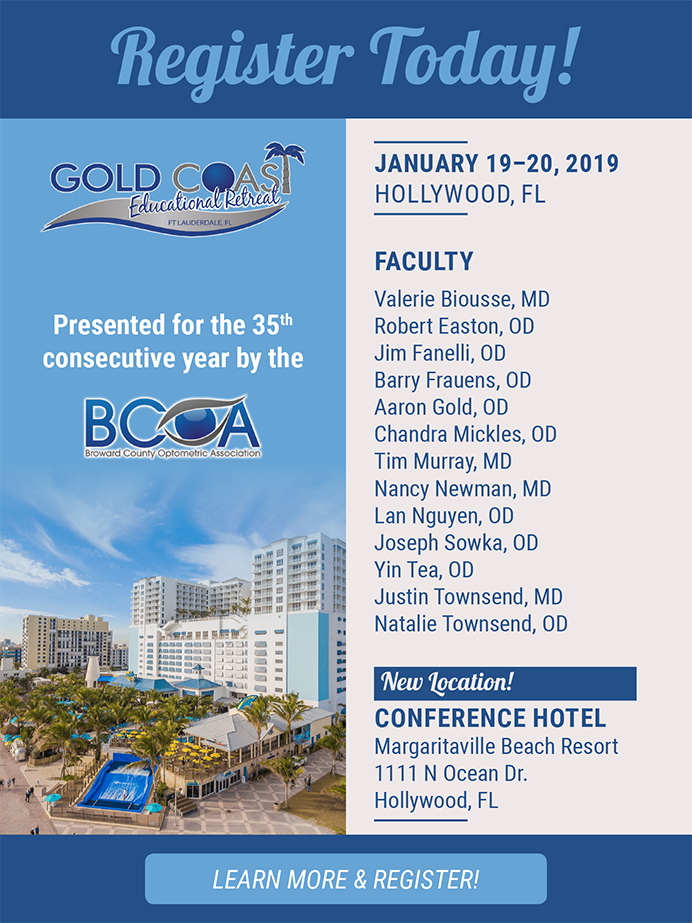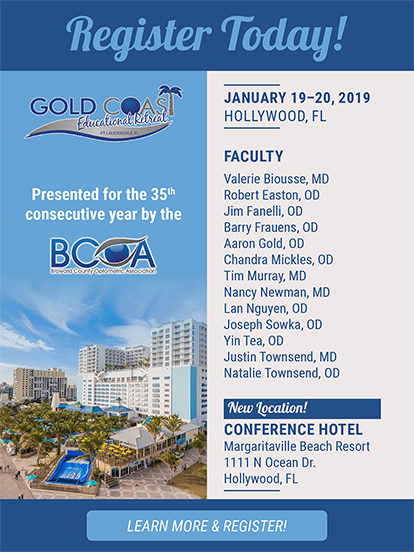Scleral lenses have created tremendous buzz in the optometric community. Although a few pioneers have been working on modern scleral designs since the 1980s, it is only in the past few years that awareness of their substantial benefits has become widely appreciated. In my 34 years of practice, scleral lenses have been the best vehicle to strengthen relationships between optometry and ophthalmology. Indeed, it was a cornea subspecialist who first urged me to begin fitting these life-changing devices, and my relationships with ophthalmologists have blossomed ever since.
PATIENT SELECTION
To build a scleral lens specialty practice, one needs patients who are appropriate candidates, such as individuals with keratoconus, pellucid marginal degeneration, ectasia after radial keratotomy or LASIK surgery, neurotrophic keratopathy, graft-versus-host disease, Stevens-Johnson syndrome, or Sjögren syndrome. Due to the severity of these conditions, most of these patients will be under the care of a cornea specialist or an ophthalmologist with a large refractive surgery practice.
OUTREACH
In my experience, many ophthalmologists are familiar with scleral lenses but do not have the time or resources to dedicate to them. They are more than happy to collaborate with a competent scleral lens practitioner. It is incumbent on us to visit these doctors and let them know we are ready to help.
In reaching out to an ophthalmologist, our office arranges a time for a visit to the ophthalmologist’s practice. We arrive on time, or even early so that we can get to know the office staff. Food is always an ice-breaker, so don’t forget to bring the treats and, as always, dress your professional best.
When we meet with the surgeon, our team provides paperwork for referrals and other information about our practice. A short referral form to be completed by the referring ophthalmologist, a brief biography of our practice, an overview on scleral lenses, a letter describing the parameters of medical necessity, and a statement of how we verify insurance are all included in a folder we provide the ophthalmologist.
The goal of the visit is to develop trust and a strong relationship. You are requesting to become part of that ophthalmologist’s greater eye care team, so you want to look and act the part. It is rare that an ophthalmologist will take the time to visit your practice, so generally your first impression is the only impression.
REFERRAL
When patients are referred to our practice, we ensure that they receive red carpet treatment. Our office schedules extra time for new scleral lens patients so that the consultation is not rushed. If the referring doctor sent examination records, we review them so that we are familiar with the case and can speak to the patient with confidence. Our scleral lens evaluation consists of manifest refraction, slit-lamp examination, tomography, trial lens fitting, and OCT imaging. We also take photographs.
Immediately following this initial visit, a personalized note is sent to the referring ophthalmologist. We thank the doctor for the referral, offer a brief summary of our findings, and detail a short description of the lenses to be ordered. A lengthy letter is not required. The note should let the referring doctor know that his or her patient was seen and a treatment plan is under way. At the conclusion of the fitting process, a final comprehensive letter may be sent, along with photographs and OCT images, if available. This helps to build a relationship with the referring physician and establish our professional bona fides.
It is not unusual for patients to become attached to their scleral lens practitioner. Often, the scleral lens fitter’s expertise provides patients with clear, comfortable vision, perhaps for the first time ever. It is important to emphasize to these patients that our services are a part of the larger MD/OD team. Making certain that scleral lens patients see a cornea specialist on a regular basis is our responsibility, as well.
Building strong professional relations takes time, effort, and an ongoing commitment to excellence. This is a two-way street. Ophthalmologists who refer to your practice can rightfully expect to see surgical referrals coming their way.






